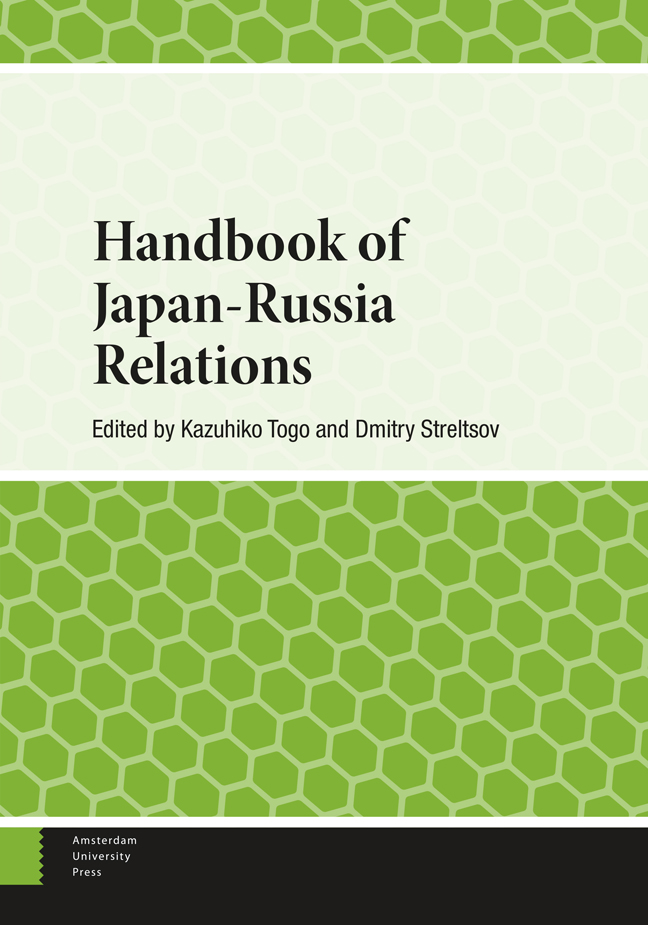Book contents
- Frontmatter
- Contents
- Dedication
- Acknowledgements
- Contributors
- Abbreviations
- Introduction
- Part 1 War and Peace: Diplomatic Relations and Security
- Part 2 Territory
- Part 3 The Economy and Energy
- Part 4 Disaster Cooperation
- Part 5 Culture
- Part 6 Perceptions of the Other
- Appendix 1 1956 Joint Declaration
- Appendix 2 Tokyo Declaration (1993)
- Appendix 3 Moscow Declaration (1998)
- Appendix 4 Irkutsk Statement (2001)
- Appendix 5 Foreign Ministry Statement (2022)
- Index
18 - The Role of the United States in the Peace Treaty Negotiations
Published online by Cambridge University Press: 26 March 2024
- Frontmatter
- Contents
- Dedication
- Acknowledgements
- Contributors
- Abbreviations
- Introduction
- Part 1 War and Peace: Diplomatic Relations and Security
- Part 2 Territory
- Part 3 The Economy and Energy
- Part 4 Disaster Cooperation
- Part 5 Culture
- Part 6 Perceptions of the Other
- Appendix 1 1956 Joint Declaration
- Appendix 2 Tokyo Declaration (1993)
- Appendix 3 Moscow Declaration (1998)
- Appendix 4 Irkutsk Statement (2001)
- Appendix 5 Foreign Ministry Statement (2022)
- Index
Summary
During the Cold War, Japan and the US were basically united to deal with the Soviet Union rigorously. Under Gorbachev and Yeltsin, the US encouraged peace treaty negotiations under whatever terms Japan preferred to choose. But Under Putin from 2000 to the Maidan Revolution of 2014, US-Russia relations began worsening so it became difficult for Japan to enhance peace treaty negotiations smoothly. That complexity was intensified under Obama-Putin (2015–2016) and Trump-Putin (2017–2020) when Prime Minister Abe (2013–2020) made continuous efforts to improve Japan-Russia ties and enhance peace–treaty negotiations. But since then, his successors Suga and Kishida did not show any initiative to improve ties with Russia. That negative approach was completely in harmony with the US position as displayed by President Biden since 2021.
Introduction
With seven years of occupation by the United States Forces after Japan’s defeat in World War II in 1945 and Japan’s reentry to the international society through the Treaty of San Francisco and Japan-US Security Treaty of 1951, it became clear that the fundamentals of Japan’s foreign policy and security position would be closely knit with the US position.
The relationships with the Soviet Union, which was a close ally of the United States during World War II but which became a serious rival—possibly an adversarial state for the US in the Cold War—were a very sensitive issue for Japan. At every important decision, consultation with the United States was essential for Japan, and a policy which might fundamentally hurt US interests was not feasible for any prime ministers.
From there, a fundamental rule emerged which runs through Japanese policy towards the Soviet Union or Russia from 1945 until today: when the relationships between the US and Russia were harmonious, without the seeds for confrontation, Japan’s policy of resolving its “Northern Territory” issue and concluding a peace treaty went through without US objection and possibly with distinctive support. On the contrary, when there was substantive tension between the US government and the Soviet-Russian government, any positive approach for Japan to resolve the territorial issue, conclude a peace treaty and strengthen the ties with the Soviet Union or Russia met with a negative reaction by the US.
How the war in Ukraine has affected this power-value relations of the US role in the Japan-Russia peace treaty negotiations shall be mentioned very briefly in the Conclusion of this chapter.
- Type
- Chapter
- Information
- Handbook of Japan-Russia Relations , pp. 330 - 342Publisher: Amsterdam University PressPrint publication year: 2024

